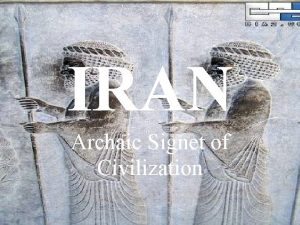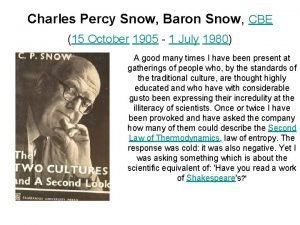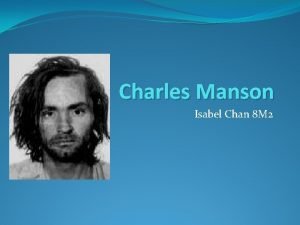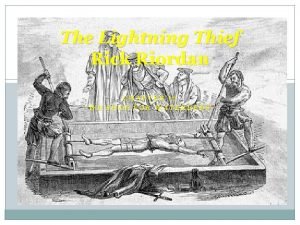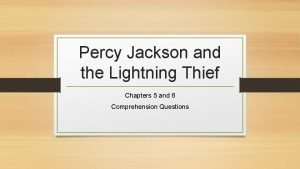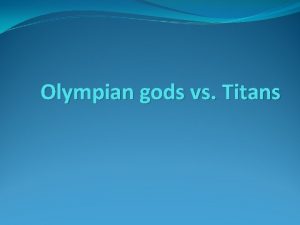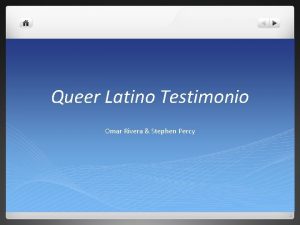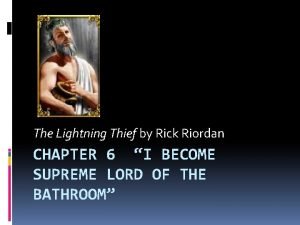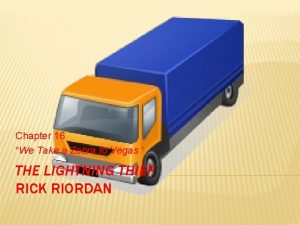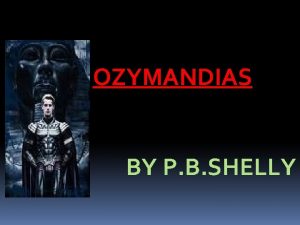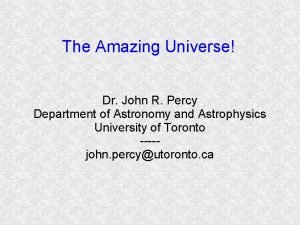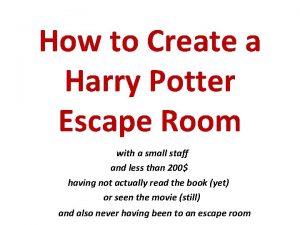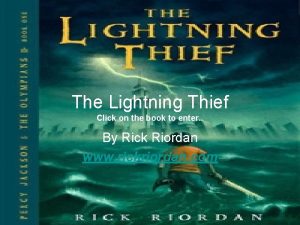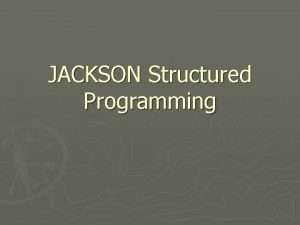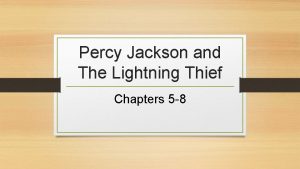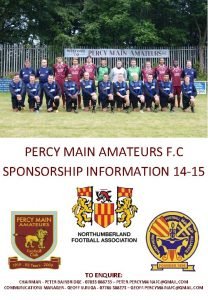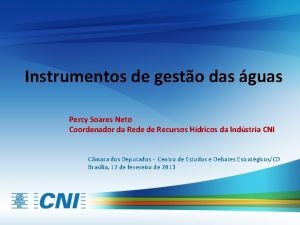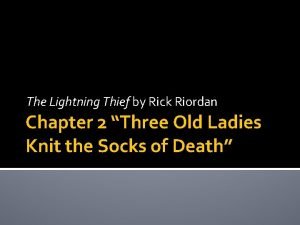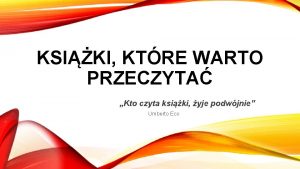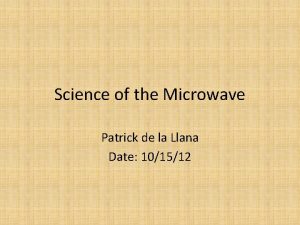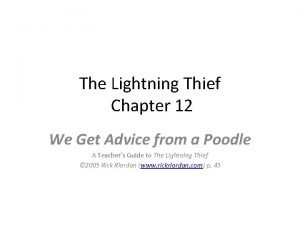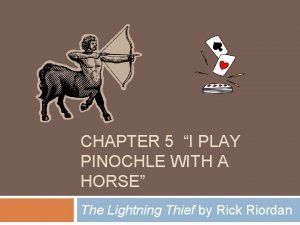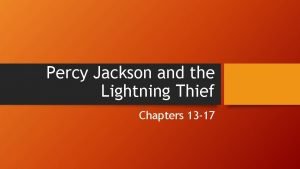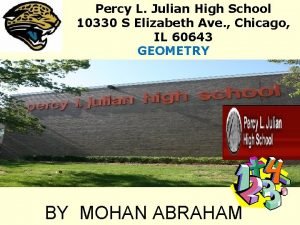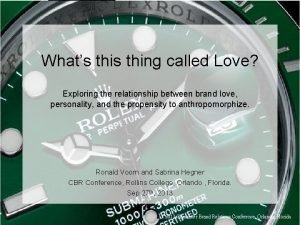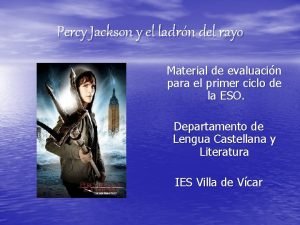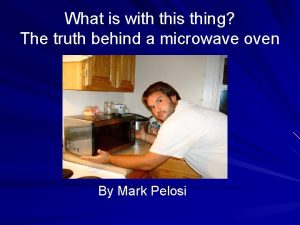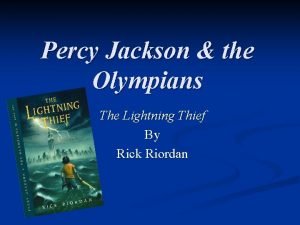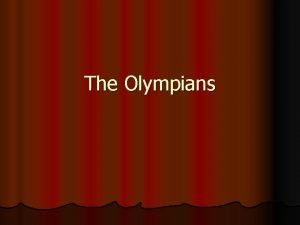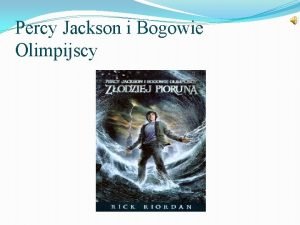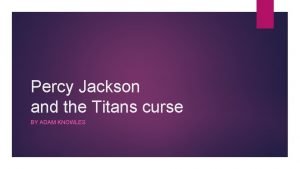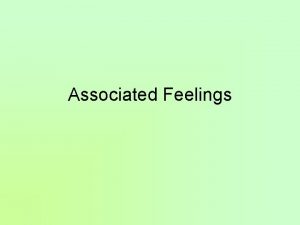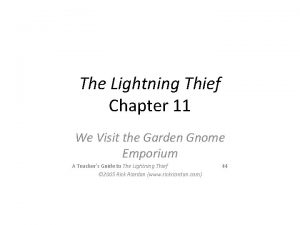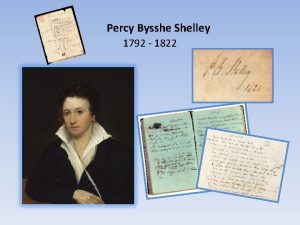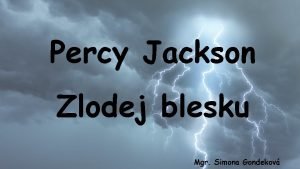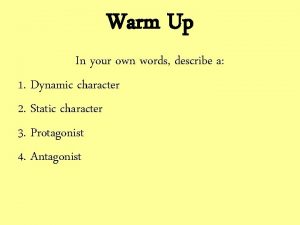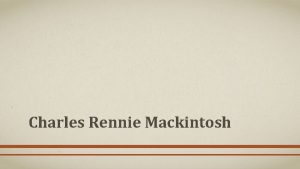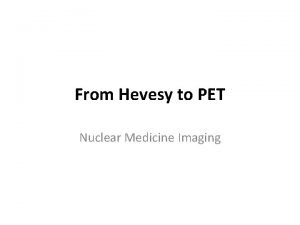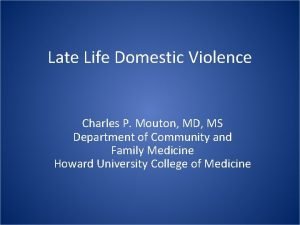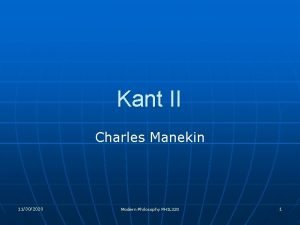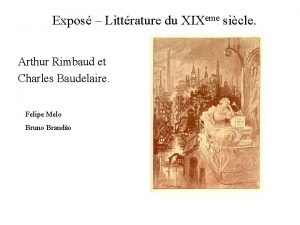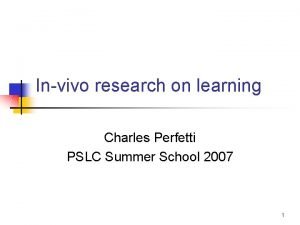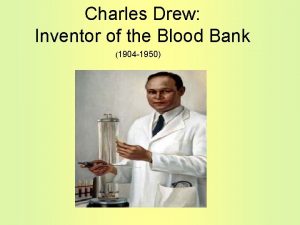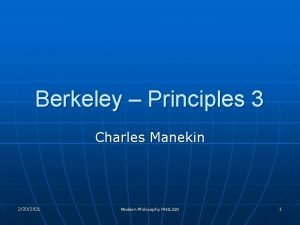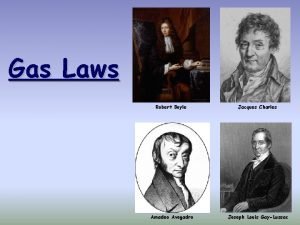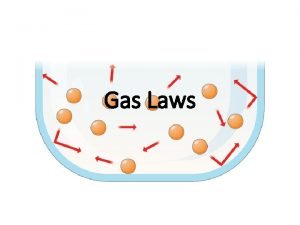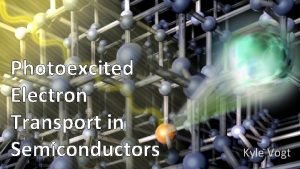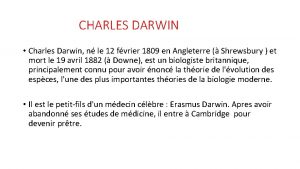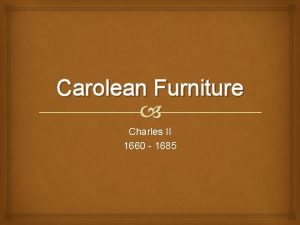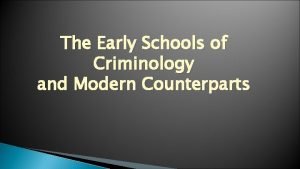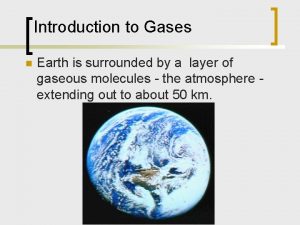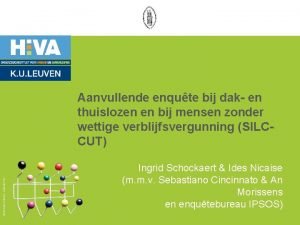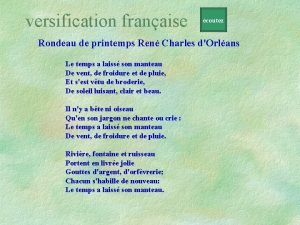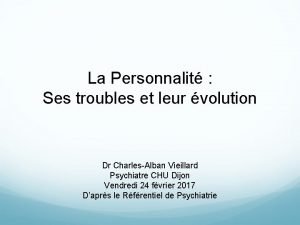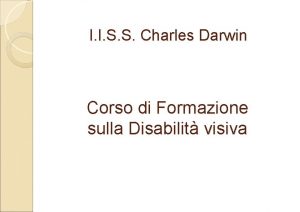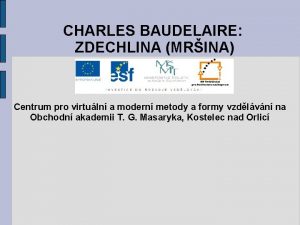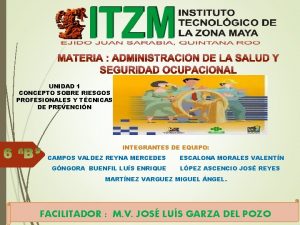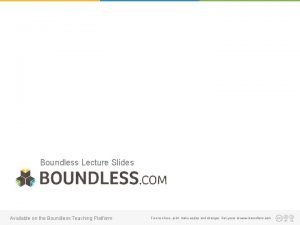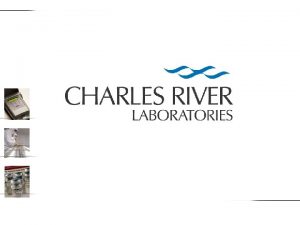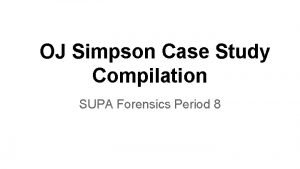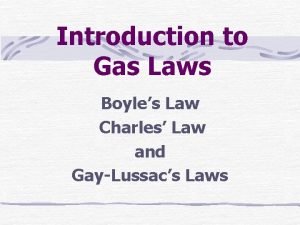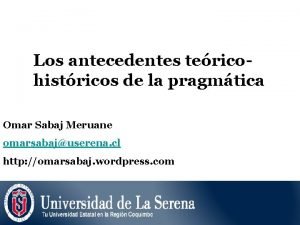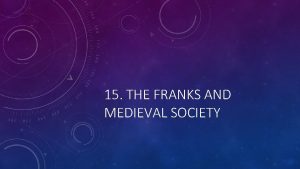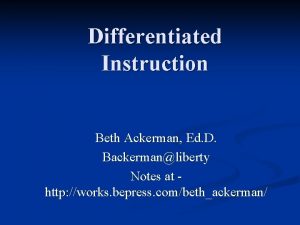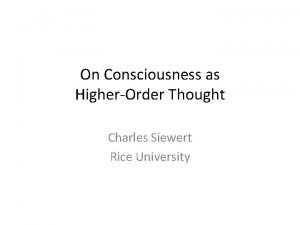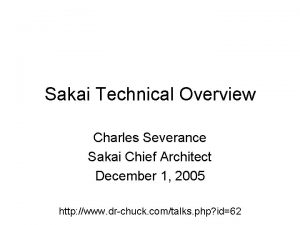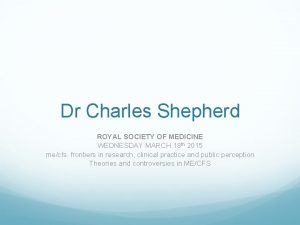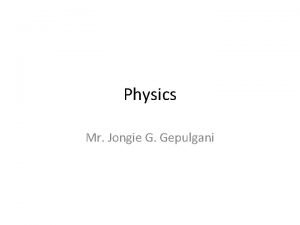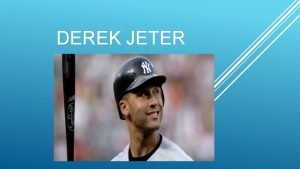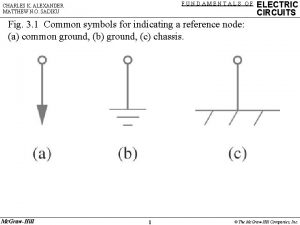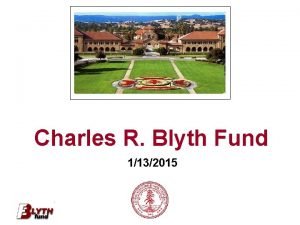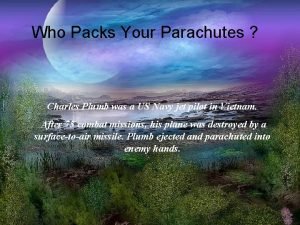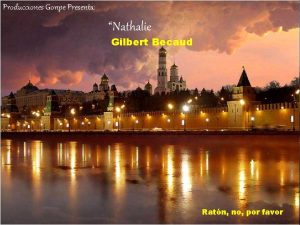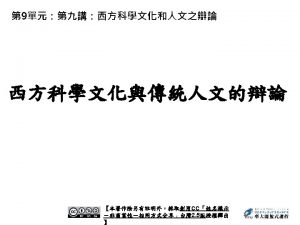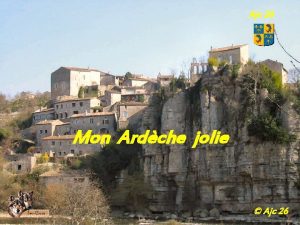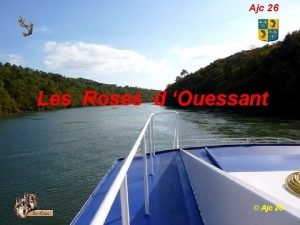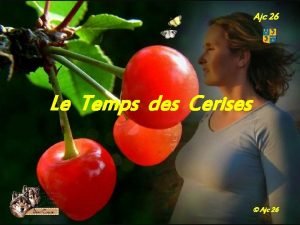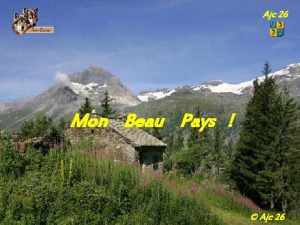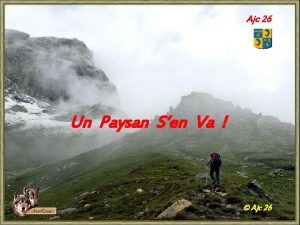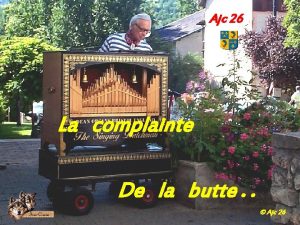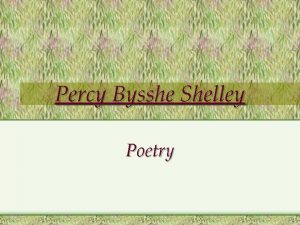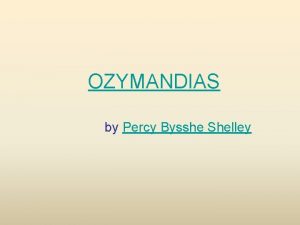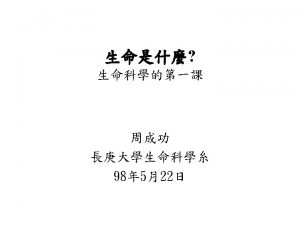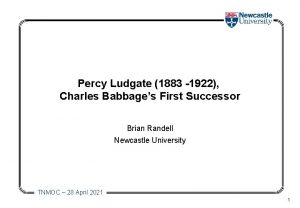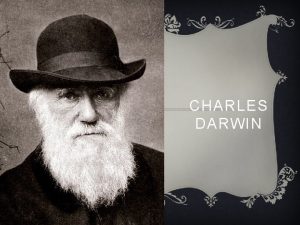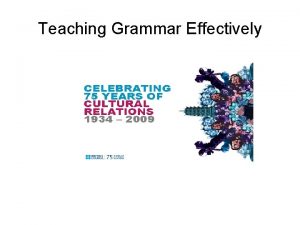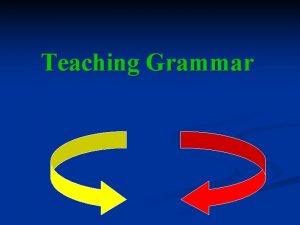Flicker AJC 1 Charles Percy Snow1905 80 grammar













































































































- Slides: 109




Flicker: AJC 1 Charles Percy Snow(1905 – 80)




grammar school • A grammar school is a school that may, depending on regional usage as exemplified below, provide either primary education (also known as “elementary") or secondary education. Grammar schools trace their origins back to mediaeval Europe, as schools in which university preparatory subjects, such as Latin and Greek, were once were emphasized. These ancient languages are not an important component of the curriculum in grammar schools today. 參考來源:http: //www. worldlingo. com/ma/enwiki/en/Grammar_school




Ségolène Royal Nicolas Sarkozy François Bayrou Nature 446, 847 -850 (19 April 2007)




1905 -1980




• 史諾的演講,在 1959年 6月號和7月號 刊登在【邂逅】(Encounter)雜誌上。 • 在 8月號的【邂逅】雜誌上,就有許多 人發表文章討論,包括了Walter Allen, Bernard Lovell,J. H. Plumb,David Riesman,Bertrand Russel,John Cockcroft,Michael Ayrton。






Sputnik 1

KOROLEV, SERGEI PAVLOVITCH (1906 -1966), Russian spacecraft designer and headed the Vostok and Voskhod projects, as well as the early Zond and Cosmos series.

Chronology of Sputnik/Vanguard/Explorer Events 1957 -58 • October 4, 1957 USSR: Sputnik 1 (83. 6 kg) launched • November 3 USSR: Sputnik 2 (508. 3 kg), with dog Laika as passenger, launched • December 6 USA: Vanguard TV-3 explodes on launch pad • January 31, 1958 USA: Explorer 1 (14 kg), America's first satellite, discovers the Van Allen radiation belts • February 3 USSR: First try to launch Sputnik 3 fails • February 5 USA: A second Vanguard try fails • March 5 USA: Explorer 2 fails to orbit • March 17 USA: Vanguard 1 (1. 47 kg) successfully orbits, establishes the pear -shapedness of the Earth • March 26 USA: Explorer 3 orbits, collects radiation and micrometeoroid data • April 28 USA: Another Vanguard fails to orbit (third failure) • May 15 USSR: Sputnik 3 (1, 327 kg) orbits, carrying large array of scientific instruments, but tape recorder fails, so it can't map Van Allen belts • May 27 USA Vanguard fails for the fourth time • June 26 USA Vanguard fails for fifth time • July 26 USA Explorer 4 orbits and maps Van Allen radiation belts for 2 1/2 months • August 24 USA Explorer 5 fails to orbit • September 26 USA Vanguard fails for the sixth time http: //history. nasa. gov/sputnik/chronology. html

Space dog Laika

Yuri Gagarin, the first human in space

Space Race/ Creation of NASA In October 1957, the former Soviet Union successfully launched the world's first artificial satellite into Earth orbit. This brilliant achievement startled the world, and the United States stepped up its own preparations to launch an artificial satellite. But a month later another Soviet satellite was launched, Sputnik 2, which carried the dog Laika. And six months after that the 1. 3 -ton Sputnik 3 entered orbit, keeping the Russians one step ahead of the US. The launching of Sputnik had aroused a clamor on Capitol Hill for an agency that could coordinate American efforts to overtake the Russians in the race for space. The US hoped to launch a satellite of their own with a Vanguard launch vehicle developed by the US Navy, but the attempt failed. President Eisenhower then directed the Army team, under Werner von Braun, , to make a launch effort. Three months later, in January 1958, a Jupiter-C launch vehicle successfully carried the satellite, - Explorer 1, into orbit. Thus both the Soviet Union and the United States had advanced into space, be ginning the space development race between the two countries. Having lost the race to launch the world's first artificial satellite, , the US hastened its plan to develop an unmanned Moon probe, hoping to be the first to the Moon. After the successful Explorer I mission and much urging from Congress, Eisenhower signed legislation creating the National Aeronautics and Space Administration (NASA). Eisenhower had originally opposed the transfer of the space program from the Pentagon, but the final legislation contained a provision excluding military space activities from NASA control. Americas first attempt to reach the moon in August 1958 failed with the explosion of the Thor. Able launch vehicle carrying the first Moon probe Pioneer 0. In the same year, all the launches of the other Pioneer probes, 1, 2 and 3, were unsuccessful. However the US did win the ultimate race to the moon on July 20, 1969 when Neil Armstrong became the first man to set foot on the moon's surface, three months after Eisenhower's death.

Wernher Von Braun



Minnie Vautrin






KARL POPPER 1902 -1994

Theorem is Scientific only if it can be Falsified


A theory is an invention, an act of creation, based more on a scientist’s intuition than on preexisting empirical data



Thomas S. Kuhn (1922 – 1996)




Laurence Lawrence H. Summers

• HOME / NEWS / LOCAL Summers' remarks on women draw fire By Marcella Bombardieri Globe Staff / January 17, 2005 CAMBRIDGE -- The president of Harvard University, Lawrence H. Summers, sparked an uproar at an academic conference Friday when he said that innate differences between men and women might be one reason fewer women succeed in science and math careers. Summers also questioned how much of a role discrimination plays in the dearth of female professors in science and engineering. . . http: //www. boston. com/news/local/articles/2005/01/17/summers_remarks_on_women_draw_fire/











News 446, 352 -353 (22 March 2007) | doi: 10. 1038/446352 a; Published online 21 March 2007 Nature Special Report. Degrees in homeopathy slated as unscientific Abstract Alternative therapies are now a degree subject at some British universities. But do they deserve these credentials? Jim Giles reports. P. MACDIARMID/GETTY Homeopathic medicine is big business, but giving it the status of a science degree is controversial. As debate rages in the United States over whether intelligent design should be taught in science classes, another topic that many researchers see as a pseudoscience is claiming scientific status within the British education system. Over the past decade, several British universities have started offering bachelor of science (BSc) degrees in alternative medicine, including six that offer BSc degrees in homeopathy, a therapy in which the active ingredient is diluted so much that the dose given to the patient often does not contain even a single molecule of it. Some scientists are increasingly concerned that such courses give homeopathy and homeopaths undeserved http: //www. nature. com/nature/journal/v 446/n 7134/full/446352 a. html





• Transgressing the Boundaries: Towards a Transformative Hermeneutics of Quantum Gravity Alan D. Sokal Department of Physics New York University 4 Washington Place New York, NY 10003 USA Internet: SOKAL@NYU. EDU Telephone: (212) 998 -7729 Fax: (212) 995 -4016 • • November 28, 1994 revised May 13, 1995 Note: This article was published in Social Text #46/47, pp. 217 -252 (spring/summer 1996). Biographical Information: The author is a Professor of Physics at New York University. He has lectured widely in Europe and Latin America, including at the Università di Roma ``La Sapienza'' and, during the Sandinista government, at the Universidad Nacional Autónoma de Nicaragua. He is co-author with Roberto Fernández and Jürg Fröhlich of Random Walks, Critical Phenomena, and Triviality in Quantum Field Theory (Springer, 1992). Transgressing disciplinary boundaries. . . [is] a subversive undertaking since it is likely to violate the sanctuaries of accepted ways of perceiving. Among the most fortified boundaries have been those between the natural sciences and the humanities. -- Valerie Greenberg, Transgressive Readings (1990, 1) The struggle for the transformation of ideology into critical science. . . proceeds on the foundation that the critique of all presuppositions of science and ideology must be the only absolute principle of science. -- Stanley Aronowitz, Science as Power (1988 b, 339) There are many natural scientists, and especially physicists, who continue to reject the notion that the disciplines concerned with social and cultural criticism can have anything to contribute, except perhaps peripherally, to their research. Still less are they receptive to the idea that the very foundations of their worldview must be revised or rebuilt in the light of such criticism. Rather, they cling to the dogma imposed by the long post-Enlightenment hegemony over the Western intellectual outlook, which can be summarized briefly as follows: that there exists an external world, whose properties are independent of any individual human being and indeed of humanity as a whole; that these properties are encoded in ``eternal'' physical laws; and that human beings can obtain reliable, albeit imperfect and tentative, knowledge of these laws by hewing to the ``objective'' procedures and epistemological strictures prescribed by the (so-called) scientific method. http: //www. physics. nyu. edu/faculty/sokal/transgress_v 2_singlefile. html


Sokal's Hoax Steven Weinberg The New York Review of Books, Volume XLIII, No. 13, pp 11 -15, August 8, 1996 Courtesy Dr. Steven Weinberg • • Like many other scientists, I was amused by news of the prank played by the NYU mathematical physicist Alan Sokal. Late in 1994 he submitted a sham article to the cultural studies journal Social Text, in which he reviewed some current topics in physics and mathematics, and with tongue in cheek drew various cultural, philosophical and political morals that he felt would appeal to fashionable academic commentators on science who question the claims of science to objectivity. The editors of Social Text did not detect that Sokal's article was a hoax, and they published it in the journal's Spring/Summer 1996 issue. 1 The hoax was revealed by Sokal in an article for another journal, Lingua Franca; 2 he explained that his Social Text article had been "liberally salted with nonsense, " and in his opinion was accepted only because "(a) it sounded good and (b) it flattered the editors' ideological preconceptions. " Newspapers and newsmagazines throughout the U. S. and Britain carried the story. Sokal's hoax may join the small company of legendary academic hoaxes, along with the pseudo-fossils of Piltdown man planted by Charles Dawson and the pseudo-Celtic epic Ossian written by James Macpherson. The difference is that Sokal's hoax served a public purpose, to attract attention to what Sokal saw as a decline of standards of rigor in the academic community, and for that reason it was unmasked immediately by the author himself. http: //www. physics. nyu. edu/faculty/sokal/weinberg. html

帕叵 費耶阿本 拉卡托司 孔恩 拉圖 謝平 Karl Popper Paul Feyeraben Imre Lakatos Thomas Kuhn Bruno Latour Steven Shapin

Sir Karl Popper (28 July 1902 – 17 September 1994)

Theorem is Scientific only if it can be Falsified

Is this falsifiability theorem falsifiable?

A theory is an invention, an act of creation, based more on a scientist’s intuition than on preexisting empirical data

The history of science is everywhere speculative

“Our knowledge can only be finite, while our ignorance must necessarily be infinite.

The Open Society and its Enemies The Open Society by one of its Enemies

帕叵 費耶阿本 拉卡托司 孔恩 拉圖 謝平 Karl Popper Paul Feyeraben Imre Lakatos Thomas Kuhn Bruno Latour Steven Shapin

Paul Feyerabend (1924 - February 11, 1994)

The Worst Enemy of science?

Farewell to Reason The best education consists in immunizing people against systematic attempts at education

Against Method There is no any single form of reasoning that can be labelled “the scientific method”

How to Defense Society Against Science Scientists are every bit the equal of ancient myth-tellers, troubadous and court jesters. Leading Intellectuals with their zeal for objectivity……. are criminals, not the liberators of mankind. Science is become kind of a religion.

帕叵 費耶阿本 拉卡托司 孔恩 拉圖 謝平 Karl Popper Paul Feyeraben Imre Lakatos Thomas Kuhn Bruno Latour Steven Shapin

Imre Lakatos (1922 -1974 )

Proofs and Refutations • The thesis of 'Proofs and Refutations' is that the development of mathematics does not consist (as conventional philosophy of mathematics tells us it does) in the steady accumulation of eternal truths. Mathematics develops, according to Lakatos, in a much more dramatic and exciting way - by a process of conjecture, followed by attempts to 'prove' the conjecture (i. e. to reduce it to other conjectures) followed by criticism via attempts to produce counterexamples both to the conjectured theorem and to the various steps in the proof. • that Proofs and Refutations is: • . . . an overwhelming work. The effect of its polemical brilliance, its complexity of argument and self-conscious sophistication, its sheer weight of historical learning, is to dazzle the reader. http: //www-groups. dcs. st-and. ac. uk/~history/Printonly/Lakatos. html

IMRE LAKATOS

帕叵 費耶阿本 拉卡托司 孔恩 拉圖 謝平 Karl Popper Paul Feyeraben Imre Lakatos Thomas Kuhn Bruno Latour Steven Shapin

Thomas S. Kuhn (1922 - 1996) Richard L. W. Clarke

Paradigm • Paradigm shift, sometimes known as extraordinary science or revolutionary science, is the term first used by Thomas Kuhn in his influential 1962 book The Structure of Scientific Revolutions to describe a change in basic assumptions within the ruling theory of science. It is in contrast to his idea of normal science. • It has since become widely applied to many other realms of human experience as well even though Kuhn himself restricted the use of the term to the hard sciences. According to Kuhn, "A paradigm is what members of a scientific community, and they alone, share. ” (The Essential Tension, 1997). Unlike a normal scientist, Kuhn held, “a student in the humanities has constantly before him a number of competing and incommensurable solutions to these problems, solutions that he must ultimately examine for himself. ” (The Structure of Scientific Revolutions). A scientist, however, once a paradigm shift is complete, is not allowed the luxury, for example, of positing the possibility that miasma causes the flu or that ether carries light in the same way that a critic in the Humanities can choose to adopt a 19 th century theory of poetics, for instance, or select Marxism as an explanation of economic behaviour. Thus, paradigms, in the sense that Kuhn used them, do not exist in Humanities or social sciences. Nonetheless, the term has been adopted since the 1960 s and applied in non-scientific contexts. http: //basetechnology. blogspot. com/2009/02/what-is-paradigm-shift. html

帕叵 費耶阿本 拉卡托司 孔恩 拉圖 謝平 Karl Popper Paul Feyeraben Imre Lakatos Thomas Kuhn Bruno Latour Steven Shapin

Bruno Latour


Steven Shapin Ragesoss Franklin L. Ford Professor of the History of Science














 American job center bertie backus
American job center bertie backus Flicker
Flicker Charles percy snow
Charles percy snow Charles manson childhood
Charles manson childhood Chomsky hierarchy
Chomsky hierarchy Right linear grammar to left linear grammar
Right linear grammar to left linear grammar How to convert right linear grammar to left linear grammar
How to convert right linear grammar to left linear grammar Strength and weakness of traditional grammar
Strength and weakness of traditional grammar Percy bysshe shelley harriet westbrook
Percy bysshe shelley harriet westbrook How does annabeth pay for the trip to los angeles?
How does annabeth pay for the trip to los angeles? Myblueprint
Myblueprint Prometheus riordan
Prometheus riordan Percy jackson and the lightning thief dionysus
Percy jackson and the lightning thief dionysus Gods vs titans
Gods vs titans Juanito xtravaganza rivera
Juanito xtravaganza rivera Percy 1989
Percy 1989 Rick riordan
Rick riordan How does percy snap annabeth out of the trance
How does percy snap annabeth out of the trance P.b.shelly
P.b.shelly Percy jackson artemide
Percy jackson artemide Dr john percy
Dr john percy Hogwarts escape room answers
Hogwarts escape room answers Sa/sd methodology
Sa/sd methodology Describe the chimera in percy jackson
Describe the chimera in percy jackson Percy jackson 3 cda
Percy jackson 3 cda Percy jackson vocabulary chapters 5-8
Percy jackson vocabulary chapters 5-8 Percy main afc
Percy main afc Percy jackson opis
Percy jackson opis 67 l
67 l Percy soares neto
Percy soares neto Tyson favourite food percy jackson
Tyson favourite food percy jackson Chapter 2 summary of percy jackson the lightning thief
Chapter 2 summary of percy jackson the lightning thief Percy jackson lubimyczytac
Percy jackson lubimyczytac Percy jackson personages
Percy jackson personages Percy spencer the inventor of the microwave oven igcse
Percy spencer the inventor of the microwave oven igcse Esther jackson elementary school rating
Esther jackson elementary school rating Chapter 12 of percy jackson and the lightning thief
Chapter 12 of percy jackson and the lightning thief I play pinochle with a horse
I play pinochle with a horse Why does percy feel ashamed that poseidon saved him
Why does percy feel ashamed that poseidon saved him Percy l julian high school
Percy l julian high school Rossiter percy grid
Rossiter percy grid P b shelley
P b shelley Percy jackson wikipedia
Percy jackson wikipedia Percy spencer invented the microwave
Percy spencer invented the microwave Percy jackson i battle my jerk relative
Percy jackson i battle my jerk relative Cronus and rhea.
Cronus and rhea. Peter jackson i bogowie olimpijscy
Peter jackson i bogowie olimpijscy Percy jackson at adam
Percy jackson at adam Rossiter percy grid
Rossiter percy grid Percy jackson chapter 11 pdf
Percy jackson chapter 11 pdf Why does percy leave grover at the bus station
Why does percy leave grover at the bus station Percy florence shelley
Percy florence shelley Vojna bohov
Vojna bohov His nemesis is metro man
His nemesis is metro man John thomas white lemon squeezer inventor
John thomas white lemon squeezer inventor Ruth charles dietitian
Ruth charles dietitian Ideal gas law examples
Ideal gas law examples Charles rennie mackintosh timeline
Charles rennie mackintosh timeline Positron emission tomography
Positron emission tomography Charles mouton md
Charles mouton md Charles brenner
Charles brenner Charles manekin
Charles manekin 1891-1854
1891-1854 Charles perfetti
Charles perfetti Charles drew inventor
Charles drew inventor Charles manekin
Charles manekin Fs71i
Fs71i Princess diana family tree
Princess diana family tree Charles john huffan dickens
Charles john huffan dickens Robert boyle equation
Robert boyle equation Charles's law
Charles's law Charles fritts
Charles fritts Charles darwin vikidia
Charles darwin vikidia Prince and madonna relationship
Prince and madonna relationship Carolean period
Carolean period Difference between classical and neoclassical theory
Difference between classical and neoclassical theory Darwin vs lamarck worksheet
Darwin vs lamarck worksheet Charles homer lane ffa
Charles homer lane ffa Units for boyle's law
Units for boyle's law Rd banerji
Rd banerji Charles eames hang it all
Charles eames hang it all Charles colbourn
Charles colbourn Rondeau du printemps
Rondeau du printemps Histrionique
Histrionique Scrhac
Scrhac Iiss charles darwin
Iiss charles darwin Zdechlina charles baudelaire
Zdechlina charles baudelaire Charles trackrak
Charles trackrak Charles db king
Charles db king Endosafe coa
Endosafe coa Steven schwab oj simpson
Steven schwab oj simpson Picture of charles law
Picture of charles law Neopositivismo
Neopositivismo Charles martel society
Charles martel society Charles plumb
Charles plumb Charles schwabn
Charles schwabn Charles siewert
Charles siewert Heavy lift and transport lake charles
Heavy lift and transport lake charles Charles severance sakai
Charles severance sakai Charles spearman
Charles spearman Dr charles shepherd
Dr charles shepherd Charles law
Charles law Derek jeter life story
Derek jeter life story Sadiku
Sadiku Jeremiah lanphier revival
Jeremiah lanphier revival Charles r blyth fund
Charles r blyth fund Historia de charles plumb
Historia de charles plumb Charles aznavour natalie
Charles aznavour natalie Boyle's law deals with
Boyle's law deals with Charles dickens contemporaries
Charles dickens contemporaries

